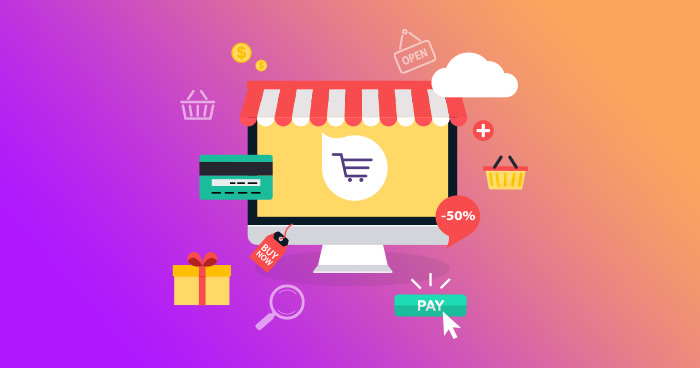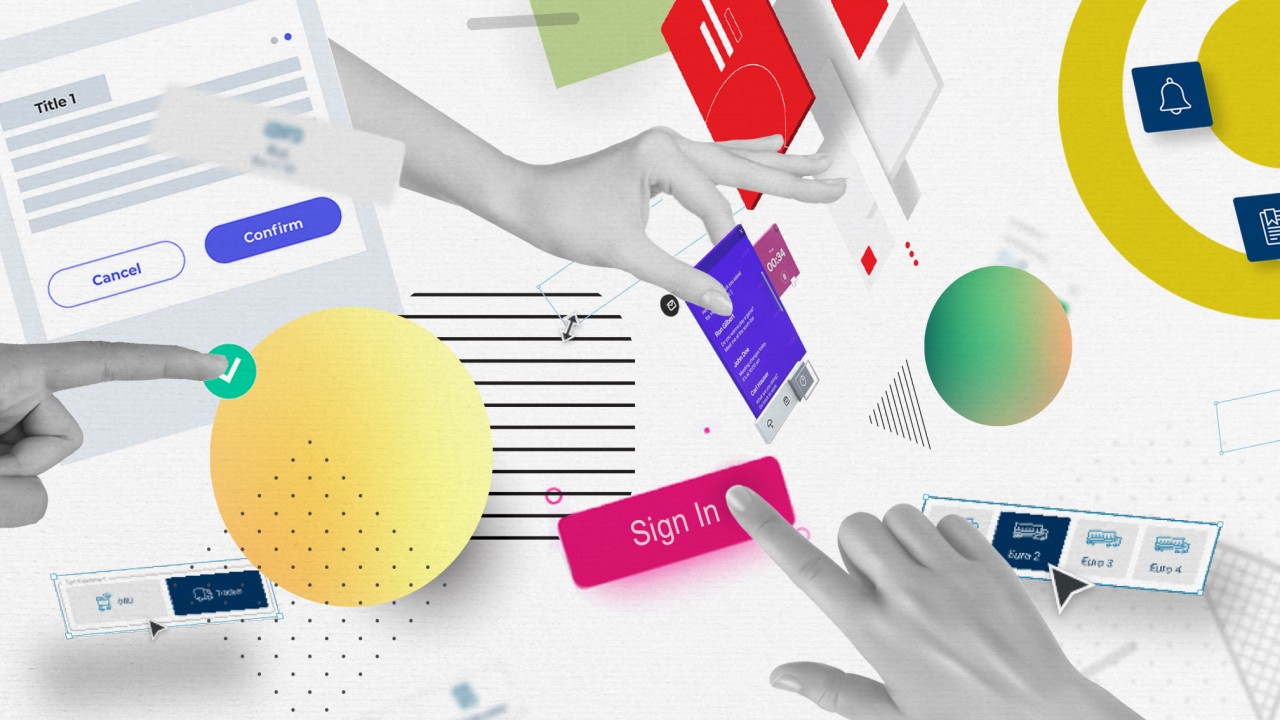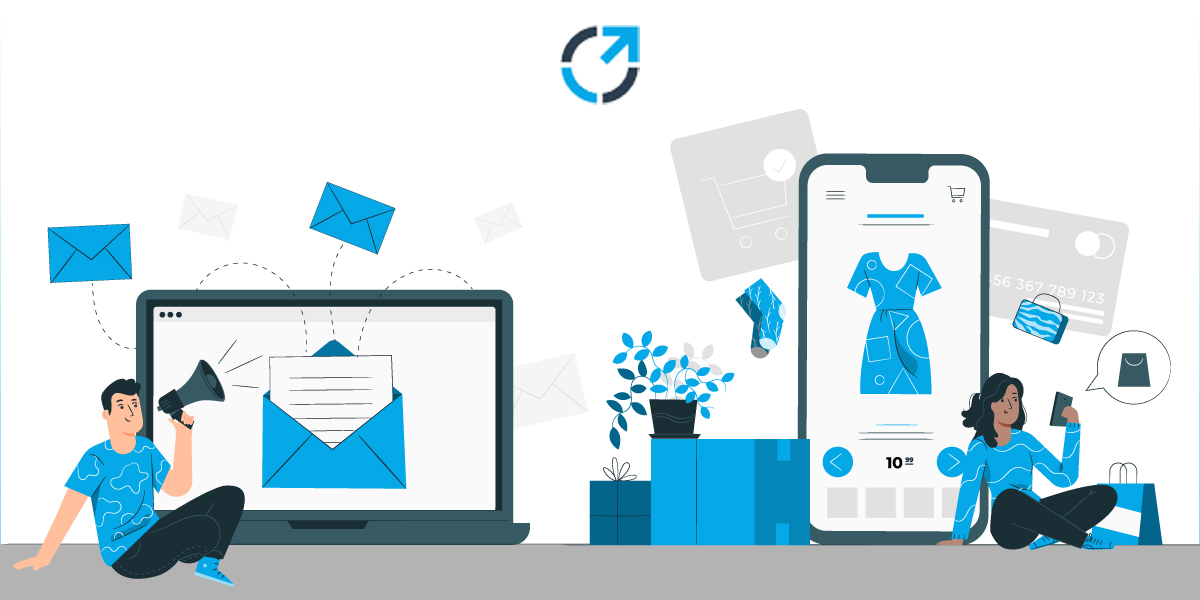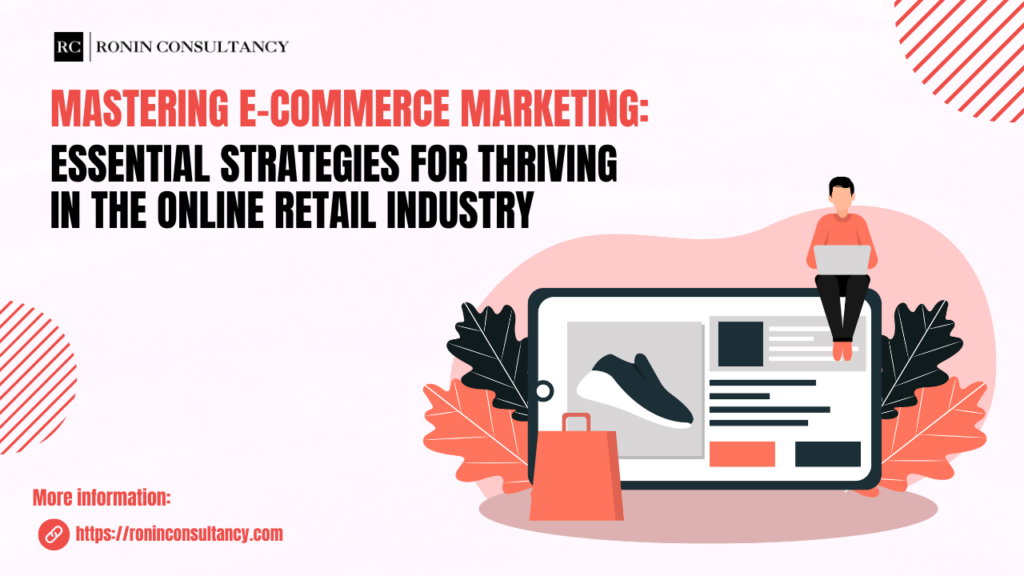Are you aiming to make a significant breakthrough in the vast landscape of e-commerce? If yes, there is no better place to start than mastering E-commerce Marketing. As most businesses today have an online presence, a well-structured e-commerce marketing strategy stands as an essential factor for survival and growth.
In this article, we will provide you with valuable insights and strategies that can help skyrocket your business to new horizons in the digitally dominated retail industry of 2024. According to the Statista reports, global e-commerce sales are expected to reach $4.9 trillion in 2024.
This huge number illustrates both the importance and potential growth of online retail. It implies a thriving environment for businesses that leverage e-commerce marketing strategies to their advantage.
Let us delve deeper into these strategies and understand how they can optimize your business operations.
1. Search engine optimization (SEO) for e-commerce

Given the vastness of the internet, being visible to potential customers hinges on the efficiency of your SEO. A site that’s well-optimized for search engines can notably increase organic traffic and draw the attention of potential customers. But how significant is this?
According to a study by Backlinko, the first result on Google’s search engine results pages (SERPs) has a 31.7% clickthrough rate. This suggests that the highest-ranked page gets nearly one-third of all clicks. That’s the power of effective SEO and one of the many reasons to prioritize it in e-commerce marketing.
SEO goes beyond merely incorporating keywords into your webpage’s content. It’s a holistic approach that includes partaking in extensive keyword research, optimizing your site’s structure, creating high-quality content, and actively pursuing backlinks. It’s an enduring, ongoing process that requires both time and dedication, but pays dividends in the long run.
Mastering SEO in e-commerce marketing can have a profound impact on your online retail store’s success. By investing the necessary time and resources into optimizing your website can convert your online store into an influential player in the digital marketplace.
E-commerce marketing offers a lively blueprint to aid online retailers in successfully navigating the digital landscape. Prioritizing SEO can become your launchpad to increased visibility, more organic traffic, and ultimately, higher sales and success.
Continually refine your e-commerce marketing strategy and remain open to exploring and implementing new SEO techniques. Your journey to online retail success largely depends on it.
2. Optimize your e-commerce website’s layout

If you’ve recently launched or redesigned your e-commerce site, it is vital to test the site’s layout, language, and location of conversion elements. A well-optimized e-commerce platform will intuitively guide your customers towards making a purchase, both simplifying and encouraging the process.
- Language Testing: The language used on your site is critical. This includes language on landing pages, product pages, and conversion elements. Essentially, every word your customer interacts with must be carefully considered.
- Layout Testing: Just as important is the strategic placement of icons and other elements. This can be understood better using various usability testing methods.
Furthermore, it’s beneficial to establish a conversion funnel analysis and optimization tool. With this tool, you’re able to analyze users’ journeys through your site, identifying pages and funnels that outperform others.
Steps to set up conversion funnel analysis and optimization tools:
- Assign pages on your site to funnels
- Analyze how users move through these funnels
- Identify top-performing pages and funnel journeys
- Use session recordings to better understand users who dropped out of the funnel and those who completed a conversion
After implementing these steps, test your updated e-commerce platform for a week and monitor the changes in your conversions. By refining your e-commerce marketing strategy, you can take your overall performance to the next level.
3. Leverage Social Media

Apart from simply showcasing your products or services to your customers, effective eCommerce marketing develops relationships with customers and cultivates an dedicated, loyal client base over time. One particularly effective strategy being utilized is the application of social media platforms.
According to eMarketer, nearly 3.23 billion people will use social media networks for shopping by 2023. It reflects the expanding potential of social media as a robust eCommerce marketing tool.
Here are key reasons to incorporate social media into your eCommerce marketing strategy:
- Access to a Large Audience: Social media networks boast huge user bases.
- User Engagement: Platforms like Instagram, Facebook, and Twitter encourage user interaction.
- Brand Visibility: Consistent presence on social media increases brand visibility and fosters customer loyalty.
- Targeted Advertising: Social networks enable highly targeted advertising, ensuring you reach the right audience.
- Analytics: Nearly every social platform provides comprehensive insight into your audience’s preferences and behaviors, helping you shape your marketing strategies.
How to Strategically Leverage Social Media
To maximize your eCommerce marketing efforts on social media, consider the following:
- Define your goals – Determine what you want to achieve with your social media marketing: Seek to create brand awareness, generate leads, or nurture customer relationships.
- Know your audience – Understand your target market. What is their age range? Interests? Shopping behavior?
- Create engaging content – Your content should be engaging, resourceful, and in alignment with your brand’s voice and aesthetic.
- Maintain Consistency – Regular and consistent posting maintains audience engagement and brand recognition.
- Reflect on Analytics – Measure performance regularly and adjust your strategies based on metrics and insight.
The landscape of eCommerce marketing is always evolving. Leveraging social media platforms allows businesses to create a robust online presence and drive sales. It’s crucial that your strategies evolve and adapt to changes for continued success.
4. Utilize Content Marketing

E-commerce has revolutionized the way we shop today. With the convenience of online shopping, businesses must adapt their marketing strategies to effectively engage their customers and foster profitable growth. To ride the wave of this digital retail revolution, one e-commerce marketing strategy stands out significantly – Content Marketing.
Quality content can drive traffic, build brand awareness, and foster strong customer relationships. A Content Marketing Institute study reveals that content marketing costs 62% less than traditional marketing and generates about three times as many leads.
Advantages of Content Marketing in E-commerce:
- Building Brand Awareness: Frequent and consistent delivery of valuable content makes your brand more visible and memorable to your target audience.
- Increasing Website Traffic: Conducting SEO strategies on your content can increase organic traffic, thereby enabling you to reach a wider audience.
- Improved Engagement: Well-constructed, informative content builds trust, and engages customers more than any traditional direct selling.
- Better Conversions: Quality content leads to better engagement which eventually drives conversion. The higher your conversion, the higher your sales.
The playing field of e-commerce marketing has become more competitive than ever. To stand out, you need innovative strategies, and content marketing is one of the most effective ways to rise above the noise. Remember, delivering quality and valuable content, builds trust, fosters loyalty, and most importantly, promotes customer conversion – the ultimate goal of every e-commerce retailer.
Even though content marketing may be a long-term strategy, it undoubtedly has the potential to bring about substantial benefits by connecting you with your target audience in a meaningful way and leading your e-commerce business towards a bright, successful future.
5. Personalize User Experience

E-commerce Marketing is not just about making your products visible to the consumers, it’s about making every customer feel valued and unique. By tailoring your messaging and offerings to individual preferences, browsing histories, and purchase patterns, you can deliver a user experience that’s distinctly personal and convincingly persuasive.
According to an Econsultancy report, 93% of companies see an uplift in conversion rates from personalization
Strategies for Implementing Personalization in E-commerce Marketing:
- Product Recommendations: Insights from previous purchases can be utilized to recommend relevant products to customers.
- Social Proof: Showcasing reviews and ratings from similar customers can build confidence in potential buyers.
- Abandoned Cart Reminders: Sending personalized reminders about items left in the shopping cart can nudge customers toward completing the transaction.
- Loyalty Rewards: Offering exclusive deals and rewards based on customers’ shopping history can incentivize repeat purchases.
By implementing personalization in your E-commerce Marketing strategy, you can communicate more effectively with your customers and create a shopping experience that’s as distinctive as they are. Remember, customers are not mere statistics in your analytics report, they’re individuals with unique needs and desires. Treat them as such, and the rewards will follow.
6. Incorporate Mobile Marketing
E-commerce marketing is fed by various streams, one of the most influential being mobile marketing due to the widespread use of smartphones. In the realm of e-commerce, mobile devices have graduated from being auxiliary shopping channels to primary devices for online purchases. Ensuring that your e-commerce platform is optimized for mobile users can make the difference between success and stagnation for your online retail business.
OuterBox states that 79% of smartphone users have made a purchase online using their mobile device in the last six months.
Strategies for Incorporating Mobile Marketing in E-commerce :
- Responsive Web Design: Ensure your website and online store are optimized for all types of mobile devices in terms of display, performance, and functionality.
- Mobile Apps: Developing a mobile app can greatly enhance user experience, leading to higher engagement and potential conversions.
- SMS and Email Marketing: Use text messages and email campaigns to keep customers informed about new products, discounts, and offers.
- Mobile Payments: Offering a seamless and secure mobile payment process could make a significant difference in conversion rates.
- Social Media Ads: With mobile users increasingly active on social media platforms, targeting these channels with ads can extremely be fruitful.
It’s crucial to understand that mobile commerce is not simply an alternative but an integral part of the online retail landscape. A well-planned mobile marketing strategy can drive traffic, engage customers, and increase conversions, contributing positively to your e-commerce marketing initiatives.
7. Humanize and personalize

In the rapidly evolving world of e-commerce, consumers have become the ultimate power players. It is therefore no surprise that your business must carve a unique niche to ensure visibility. Key to this is tailoring your user experience (UX) to meet the distinctive requirements of your audience. Remember, this isn’t just a component of your e-commerce marketing strategy—it’s a comprehensive brand strategy aspect too.
Your business needs to stand out in a unique way —customize your user experience to cater to the audience’s needs.
- Outreach Efforts: Ramp up your outreach endeavors by making them personal. Invest time and effort into understanding your customers better, as this will pay dividends in loyalty in the long run. People appreciate feeling special, fostering stronger connections with your brand.
- Personal Touches: Use personal touches such as addressing prospects by name, revealing behind-the-scenes content such as videos and images of your team, or sharing company processes and procedures. Transparency breeds trust.
- The Business Face: Everything you do contributes to the overall ‘face of your business,’ impacting the perception of your brand. Make this face a congenial one that reaches out to touch the hearts of your customers.
8. Retargeting
![5 Retargeting Strategies That Actually Work [With Examples]](https://i.imgur.com/gLOMFpX.jpg)
If you’ve ever noticed that customers who express interest in your products are more likely to come back later and make a purchase, you’re on the right track. There’s a potent e-commerce marketing strategy that capitalizes on this pattern – retargeting.
Retargeting is an advanced technique that keeps track of visitors to your website, ensuring they see your ads during their online browsing sessions. The ultimate aim? Entice them back to your site. Why? Because they’re statistically more likely to make a purchase when they return.
Let’s break down how to manage an effective retargeting campaign.
- Personalize your ads: These shouldn’t just be random generic ads. If a visitor is looking at a specific product on your site, ensure that the ads they see are of that particular product. For optimal effect, the ad should direct them to the product’s page.
- Emulate SEO and PPC marketing: The key is to show the user precisely what they’re searching for immediately when they click on your ad.
- Direct them rightly: Imagine a customer clicks on an ad for hiking boots and is redirected to your website’s general camping section. That’s a letdown! Instead, direct them to the exact hiking boots they were considering or even had in their shopping cart. They’ll be more likely to finalize the purchase.
9. Email marketing

In the complex world of e-commerce marketing, one of the most effective ways to reach your customer base is through email marketing. Yes, it’s an old-school approach, but it’s endured the tests of time because it delivers results. But like any tool, its success hinges on how you wield it.
Email marketing is not about spamming your customer’s inbox. It’s about communicating effectively and providing valuable content that resonates with them.
Here are some key strategies for mastering email marketing:
- Personalization: Make each email as personal as possible. Just addressing the customer by their name can create a bond and increase engagement.
- Valuable Promotions: Everyone loves a good deal. Offering exclusive promotions can be a great way to make your customers feel special.
- Socialization: Use your emails as social touchpoints. Share updates about your business, upcoming events, new features or products, and provide a clear glimpse into your company’s culture.
It’s essential to monitor your email marketing metrics, as they provide invaluable insights into your campaign’s performance. Additionally, adhering to email design best practices can considerably enhance user experience.
10. Target wearable and VR

One rising trend in e-commerce marketing that demands attention is the utilization of wearable and Virtual Reality (VR) technology. This advanced technology provides an enthralling, immersive environment that effortlessly captivates users. With people gradually adapting to this innovation, they haven’t yet been saturated with advertisements—hence the opportunity for fresh, impactful marketing.
It’s important to remember that your target group will be highly specific when using these media. These tech-savvy users are typically up-to-date with the latest trends, have ready access to cutting-edge technology, and are willing to spend a bit extra on products they covet. Hence, the precision of these marketing techniques can result in a high conversion rate.
While creating campaigns designed for these technologies might require significant investment, bearing in mind the potential high return on investment can make this initial cost worthwhile. Your efforts are focused on points that are more likely to yield positive results.
- Consideration: This e-commerce marketing method will not suit every business. It’s crucial to ensure that wearable and VR technology is within the sphere of awareness of your audience before you invest in this strategy.
- Strategy: Here’s where survey tools become useful once again. Gauge your customers’ reactions and get valuable feedback on their familiarity and comfort with such technology, before making a considerable investment.
Wearable and VR technology allows marketers to tap into a new, modern way of interacting with consumers. It’s a field filled with potential—but one that requires a careful, knowledgeable approach.
Remember, success in e-commerce marketing is closely tied to adaptability. Keep an eye on emerging trends, constantly refine your marketing strategies, and stay connected with your customer base. In an increasingly mobile world, embracing mobile marketing is not an option but a necessity for successful online retail marketing.
Therefore, to keep pace with the industry’s potential growth, businesses need to implement these e-commerce marketing strategies effectively. And Ronin Consultancy is your trusted partner in achieving that goal. Contact us today to take the first step toward an optimized and successful venture.

Contact Ronin Consultancy today, and let’s elevate your marketing strategy to new heights!



